In Search engine optimization
AdWords provides you with your remarketing pixel, and third party remarketing providers like AdRoll and Criteo will also provide you with your remarketing pixel to be placed on your site.

CEO

Howdy remarketing fans!
We're going to walk you through in a more visual way. What the process of remarketing looks like? Actually, showing a remarketing ad to one of your previous website visitors using cookies, using pixels, getting a little bit deeper into understanding what that process looks like - until the point where you actually serve an ad through one of the ad exchanges to one of your previous website visitors.
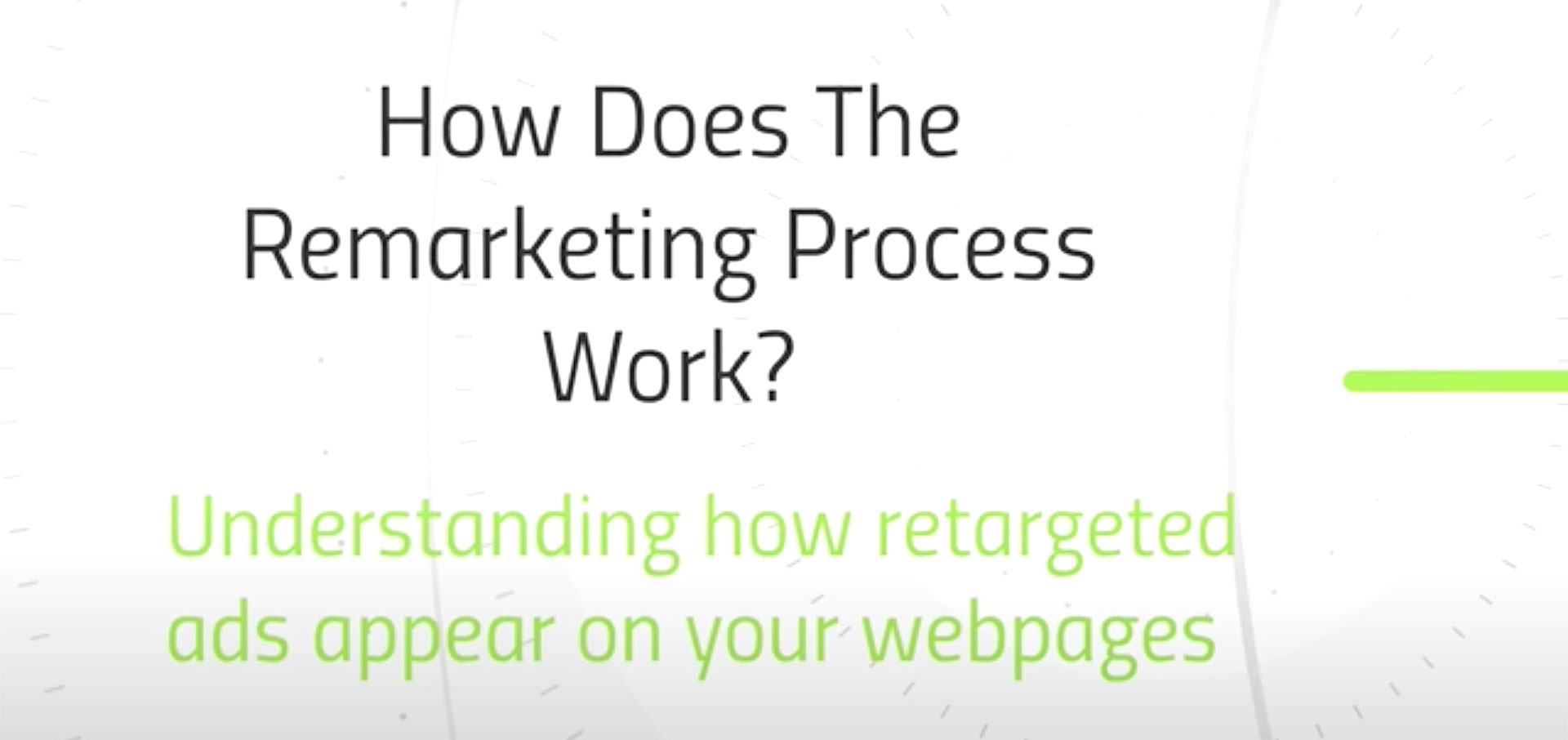
If you'd like to get a visual representation of what this looks like to get a little bit of a better understanding, then I think you'll like what I have prepared for you, so let's jump into it right now!
So, how does the remarketing process work? This post is going to help you understand how a retargeted ad actually appears on your previous website visitors as web pages.
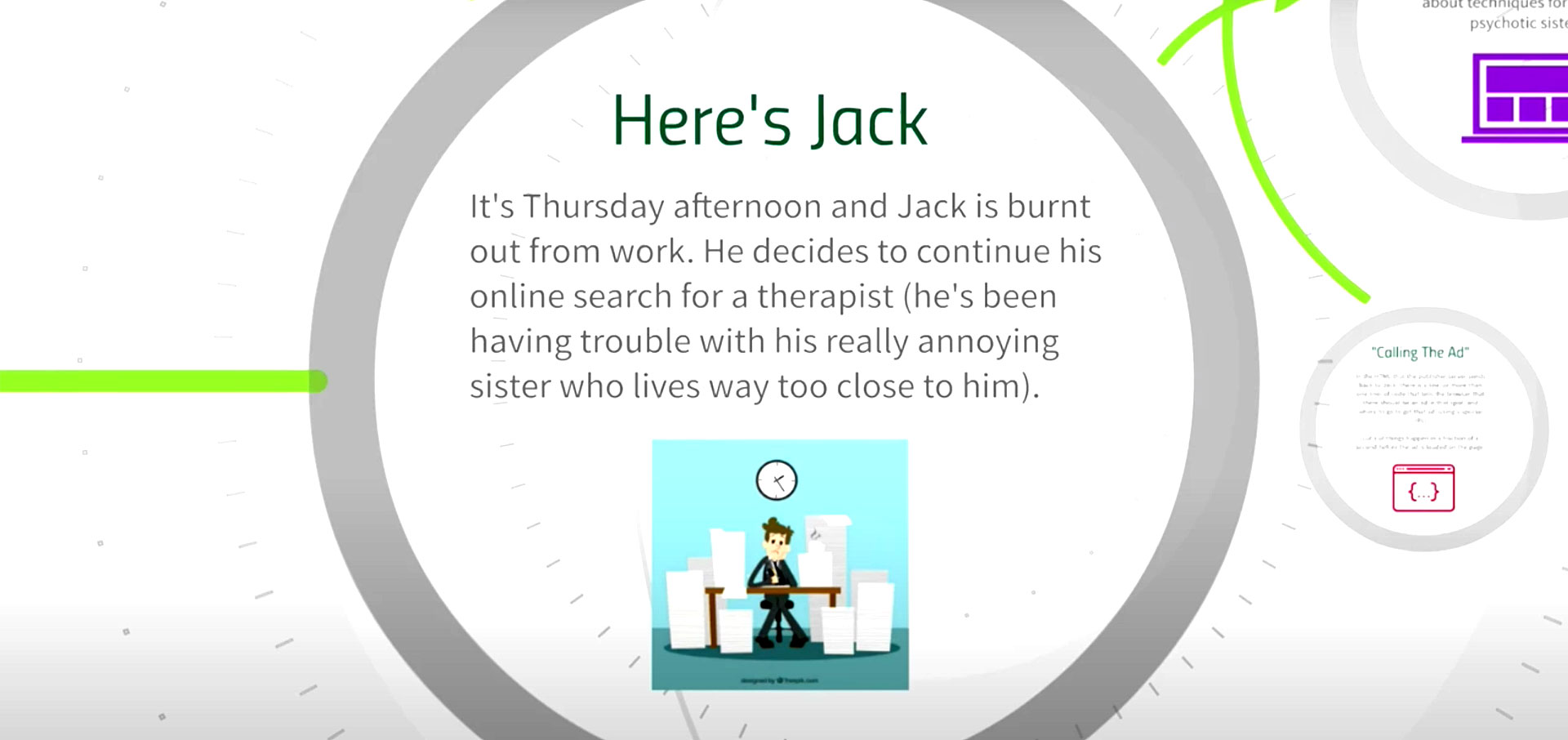
Here's Jack. It's Thursday afternoon, and Jack has really perked out from work. He decides to continue his online search for therapists. He's been having trouble with his really annoying sister who lives way too close to him.
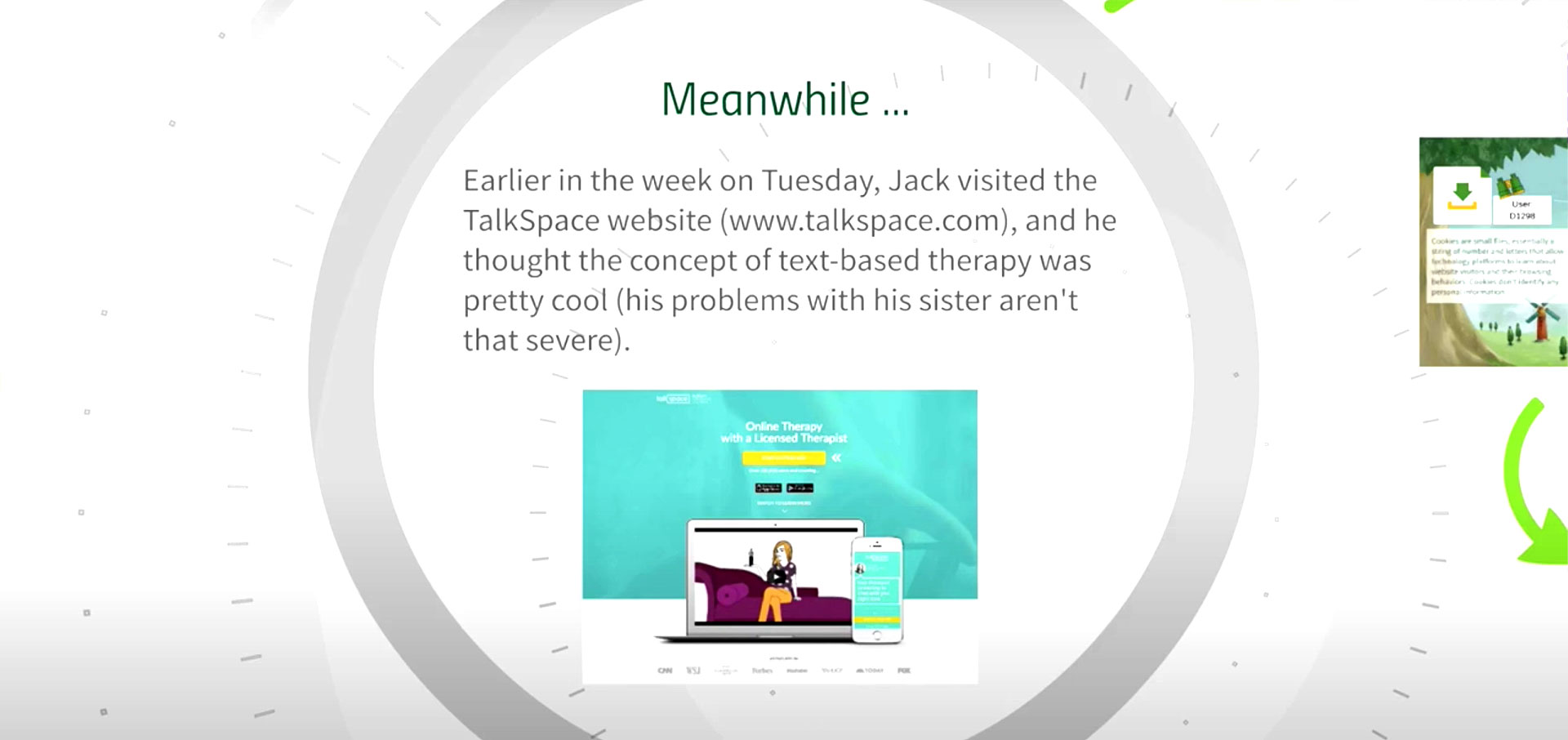
Meanwhile let's backtrack a little bit earlier in the week on Tuesday. Jack visited the talk space website www.oxfordonlineenglish.com; talk space added the Google remarketing tag to their website, which is just a snippet of code that drops a cookie into Jack's browser.
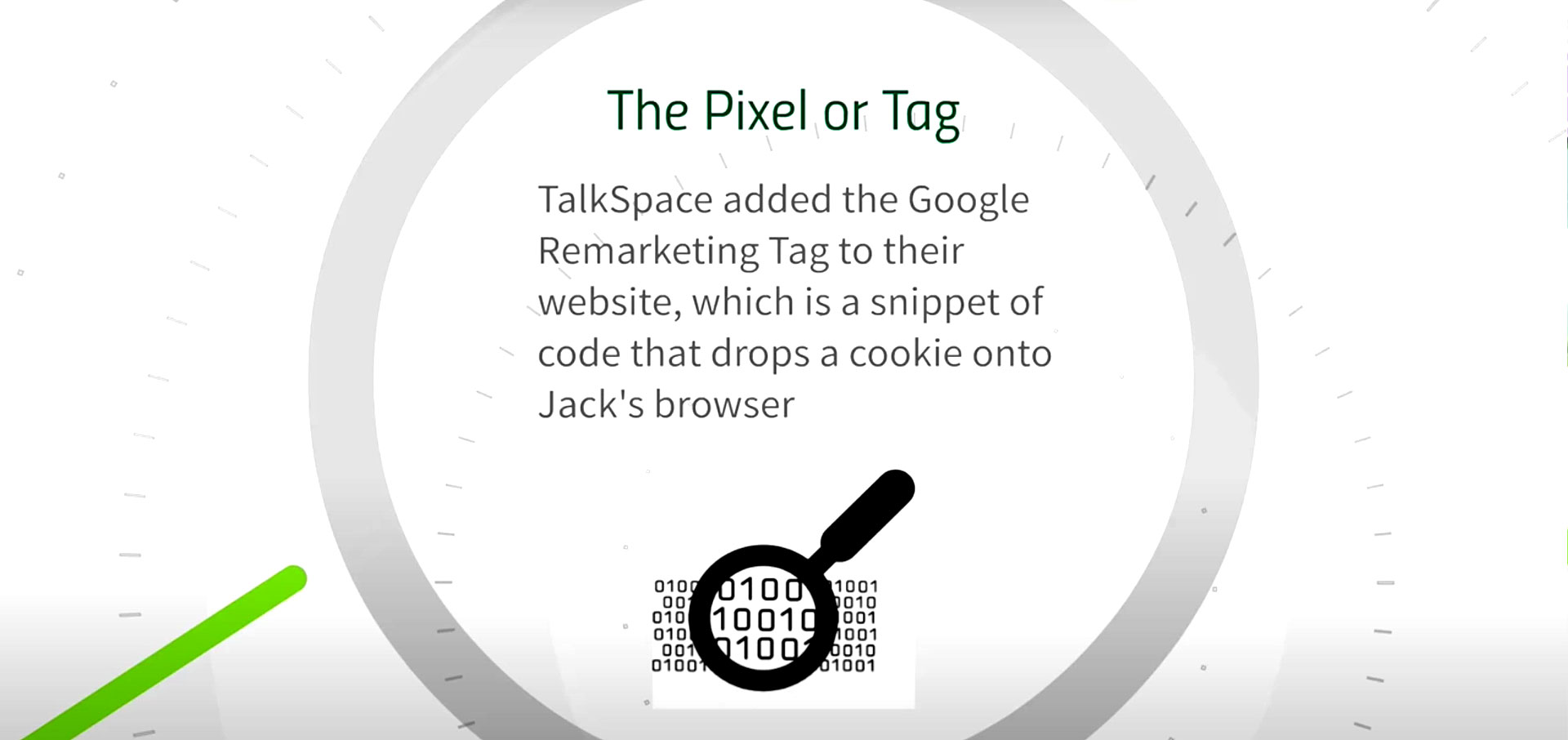
The Google remarketing tag is not the only tag that will use a pixel to drop a cookie into Jack's browser: any remarketing platform that you use or any DSP demand-side platform will use a pixel to drop a cookie into Jack's browser.
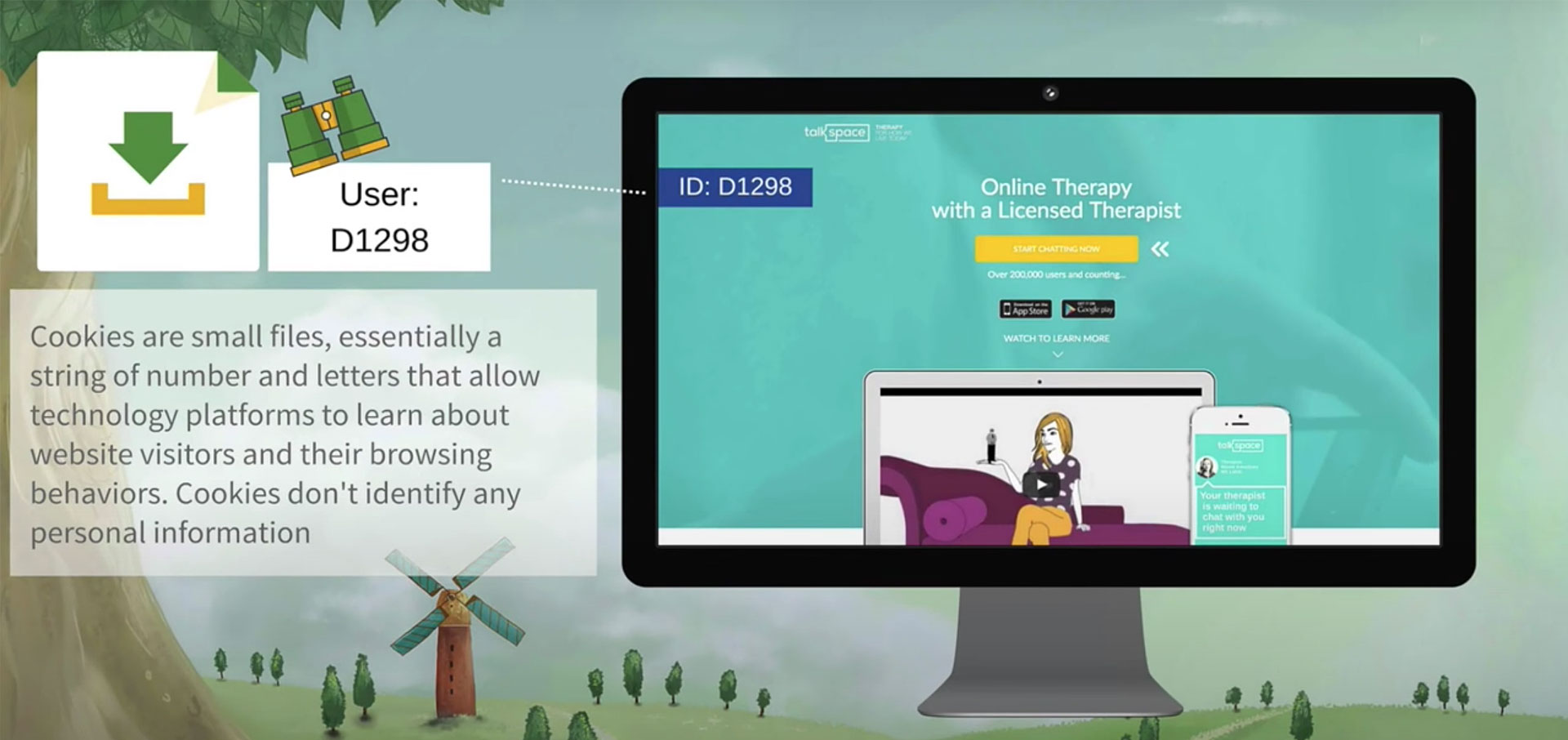
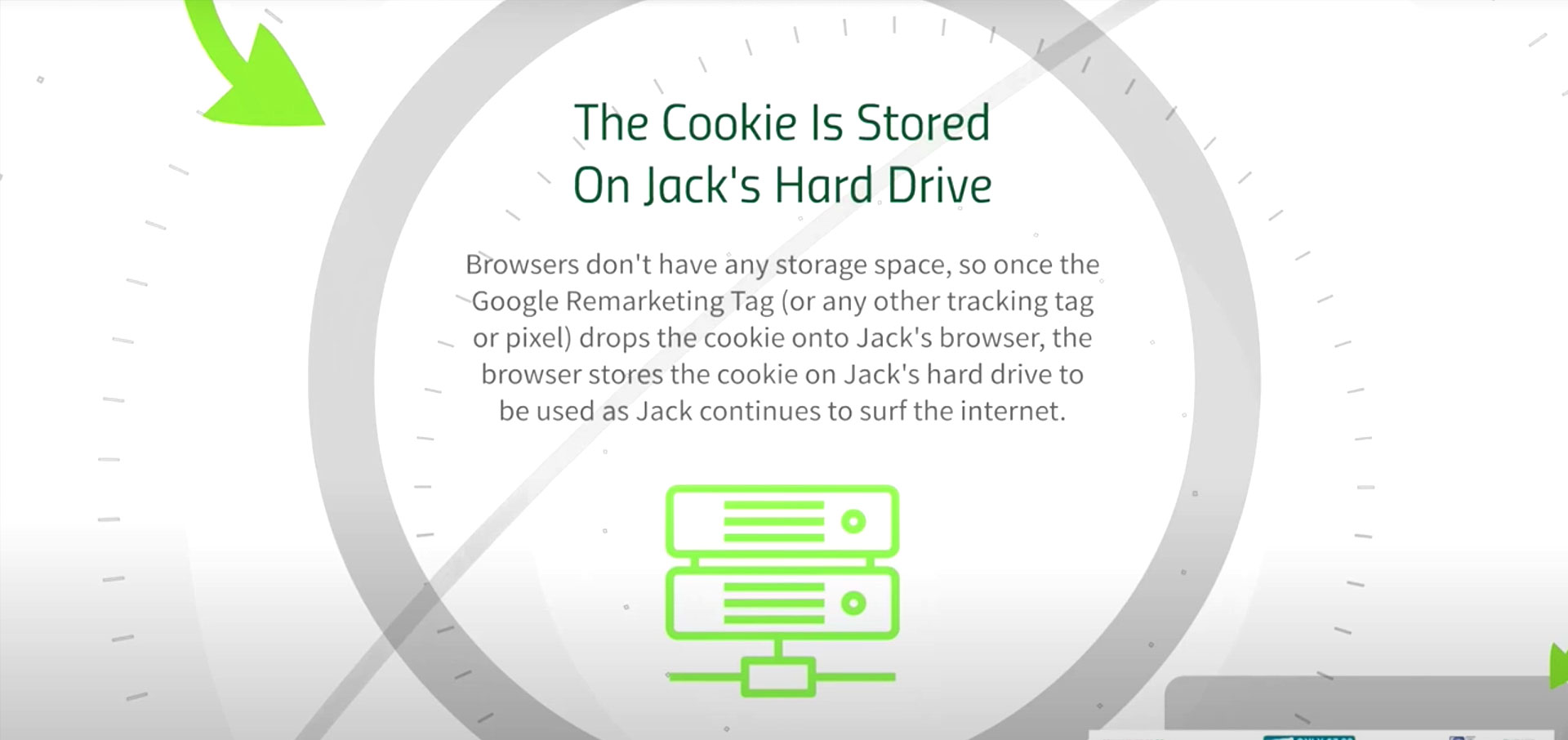
The cookie gets stored on Jack's actual computer hard drive. Browsers don't have any storage space, so once the Google remarketing tag or any other tracking tag or pixel dropped that cookie into Jack's browser, the browser stores that cookie on Jack's hard drive to be used as Jack continues to surf the web.
So we're back at Jack, and now it's Thursday afternoon. We have his previous history where he went and visited talks basis site, and talk space dropped that cookie into Jack's browser via the AdWords remarketing pixel.
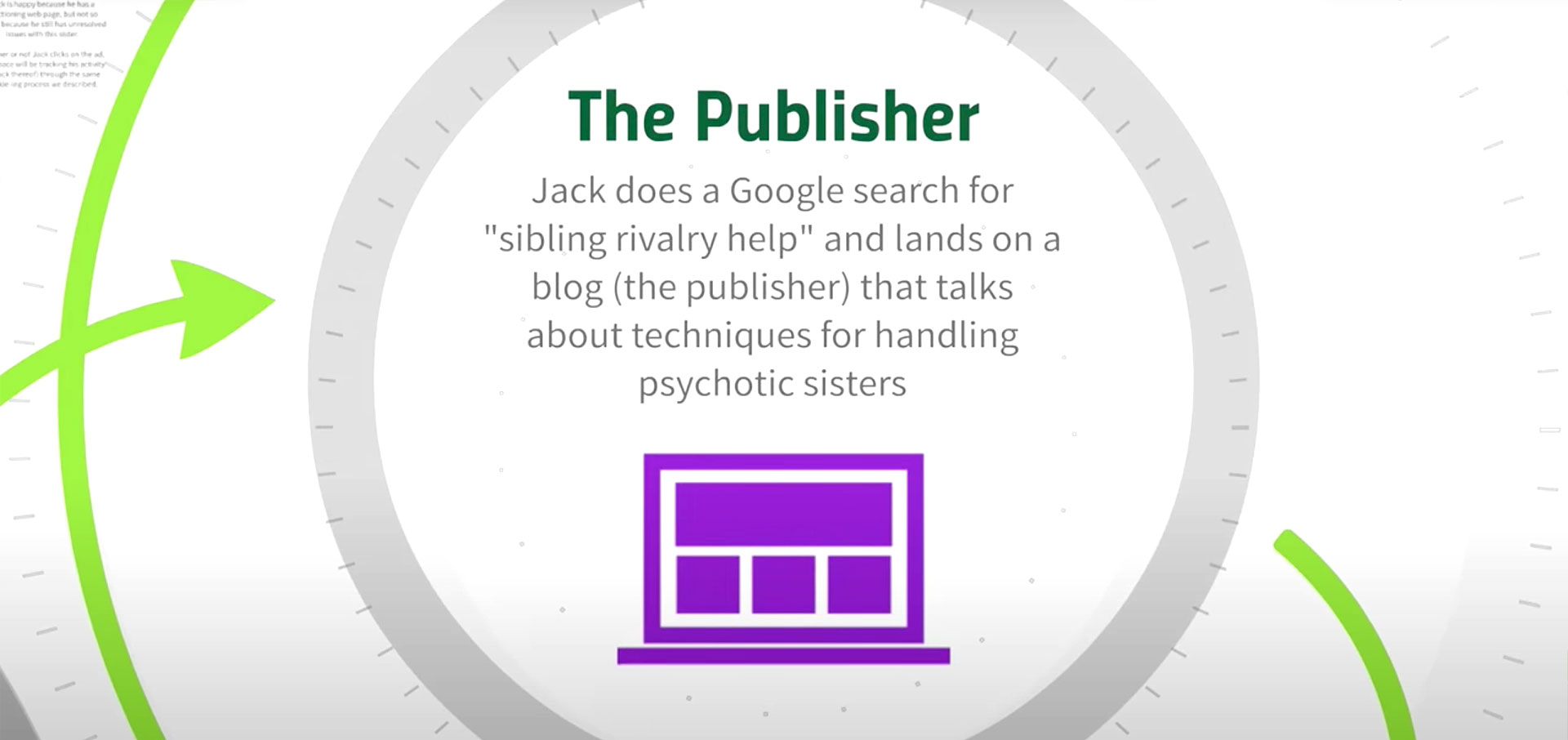
Now the publisher enters the picture. Jack does a Google search for sibling rivalry help and lands on a blog, let's say parenting.com, which is the publisher that talked about techniques for handling psychotic sisters (exactly what Jack needs!).
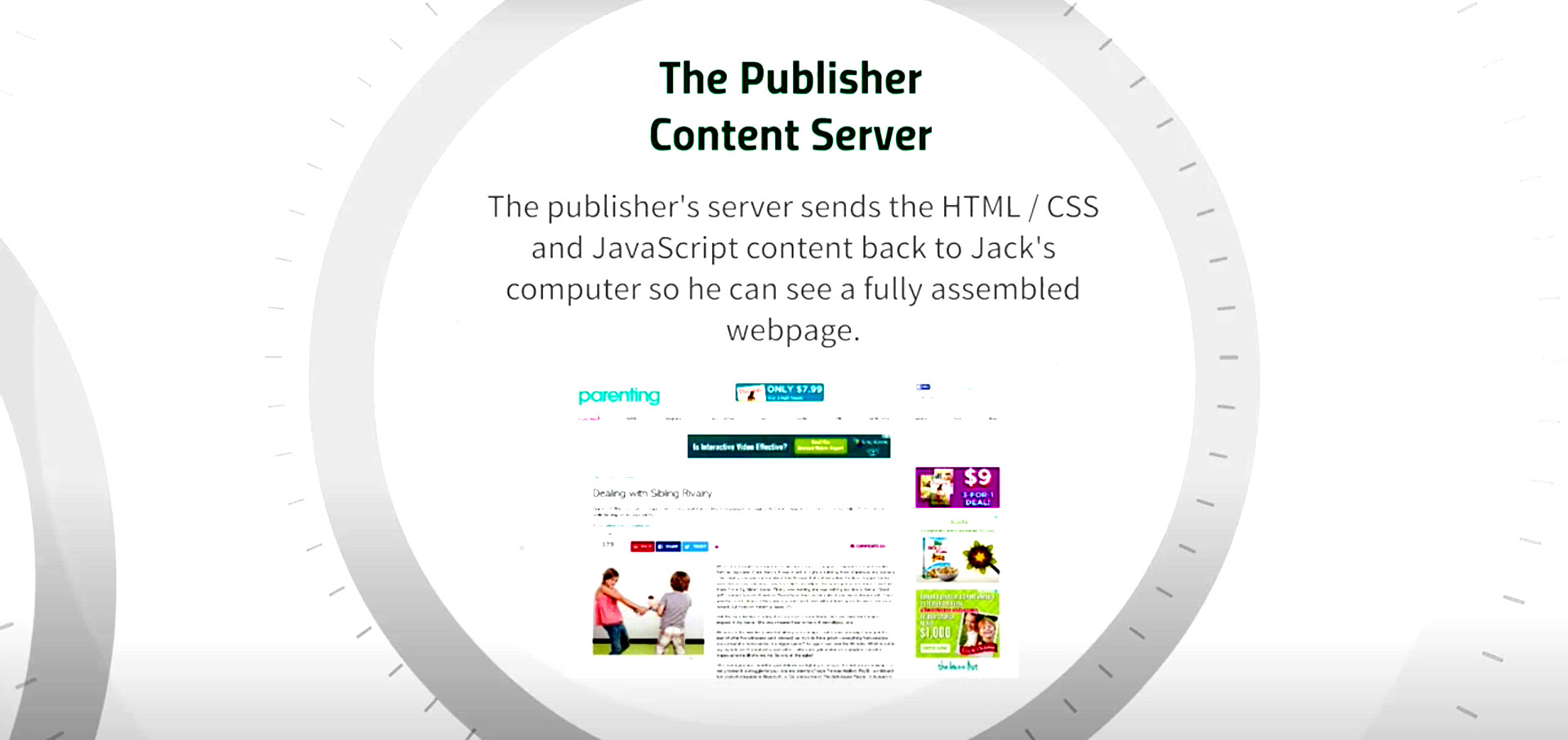
The publishers server sends the HTML, CSS and JavaScript content back to Jack's computer, so he could see a fully assembled web page - but wait, the web page is not fully assembled yet!
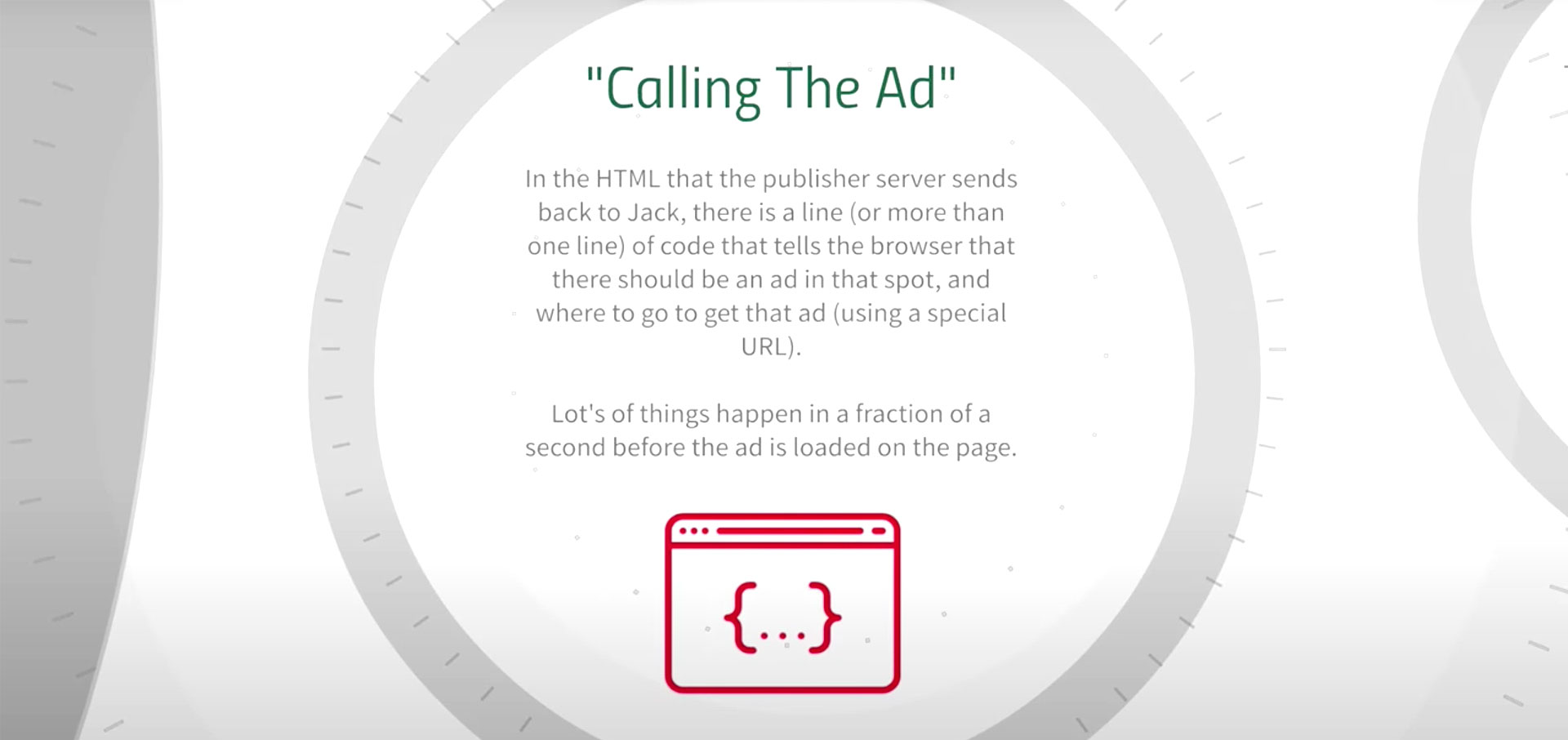
At this point in time when the HTTP or HTTPS connection is still open with a publisher server, if there supposed to be an ad on that page, a process of calling the ad or requesting an ad is going to occur. In the HTML that the publishers server sends back to Jack there is a line (or a little bit more than one line) of code that tells the browser that there should be an ad in this spot or in these multiple spots. They use a special URL to do that. Lots and lots of things happen in a fraction of a second before the ad is loaded on the page.
For our purposes we're gonna talk about an example where the ad request is sent directly to an exchange, but that's not necessarily how it always happens. Different ad spots might be reserved for certain sorts of buyers and wouldn't necessarily go to the exchange. In our example this ad slot is eligible for our TV allocation and real-time bidding allocation, so this ad request then gets sent out to one of the many ad exchanges that the publisher is working with.
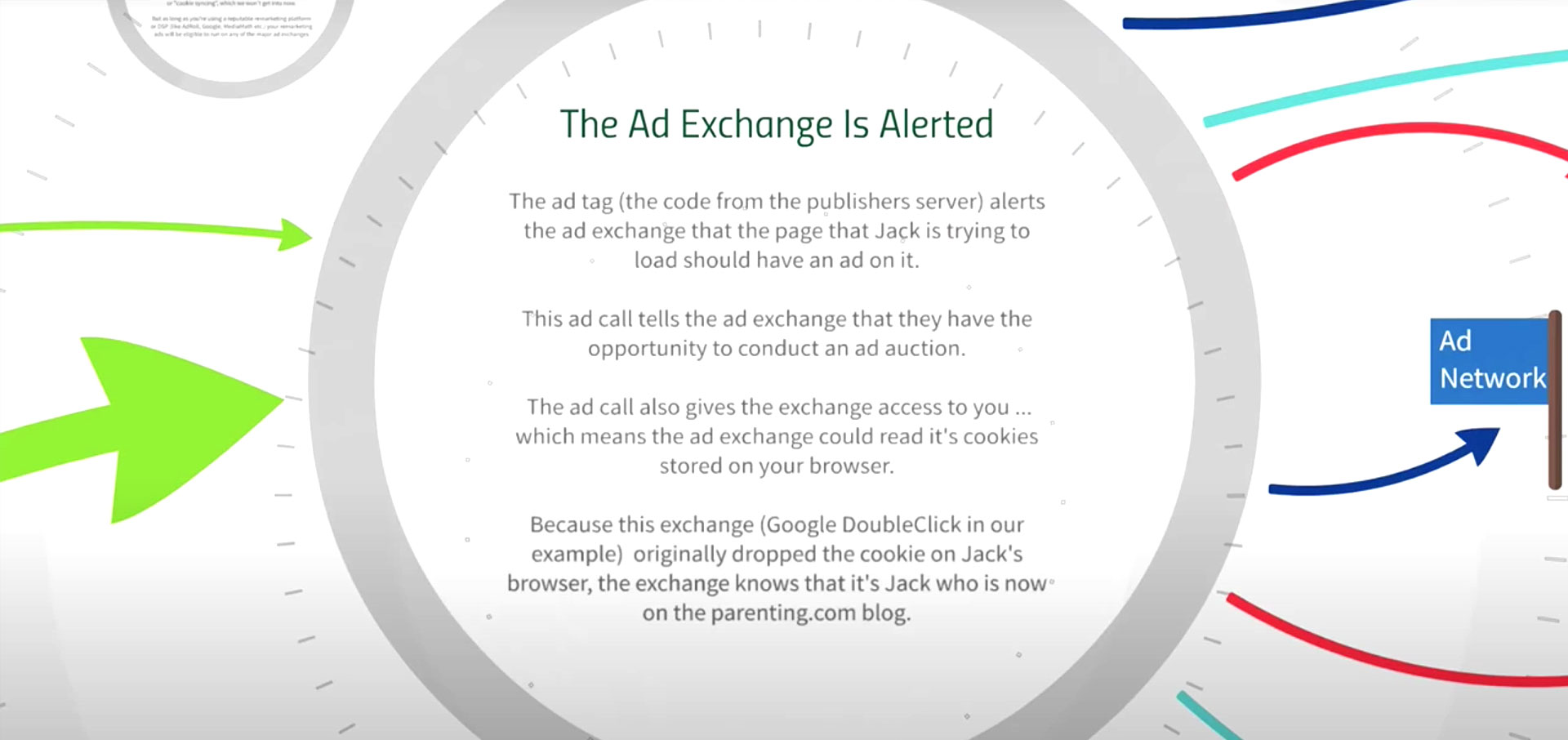
At this point the Ad Exchange is alerted that ad tag (which is that little code from the publishers server which landed on Jack's browser) alerts the Ad Exchange that the page that Jack is trying to load needs to have an ad on it. This ad call tells the Ad Exchange that they have the opportunity to conduct an ad auction. The ad call also gives the exchange access to you, and this is the most important part! That means the Ad Exchange could read it's cookies stored on your browser.
Note, how I said - it's cookies. Jacks browser might have tons of different sorts of cookies on it from all his different browsing activity, but the ad exchange could only read it's cookies. Because this ad exchange (in our example Google DoubleClick) originally dropped the cookie on Jack's browser when he was browsing last Tuesday on talks places website, the exchange knows that it's Jack who is now on the parenting.com blog reading about sibling rivalry.
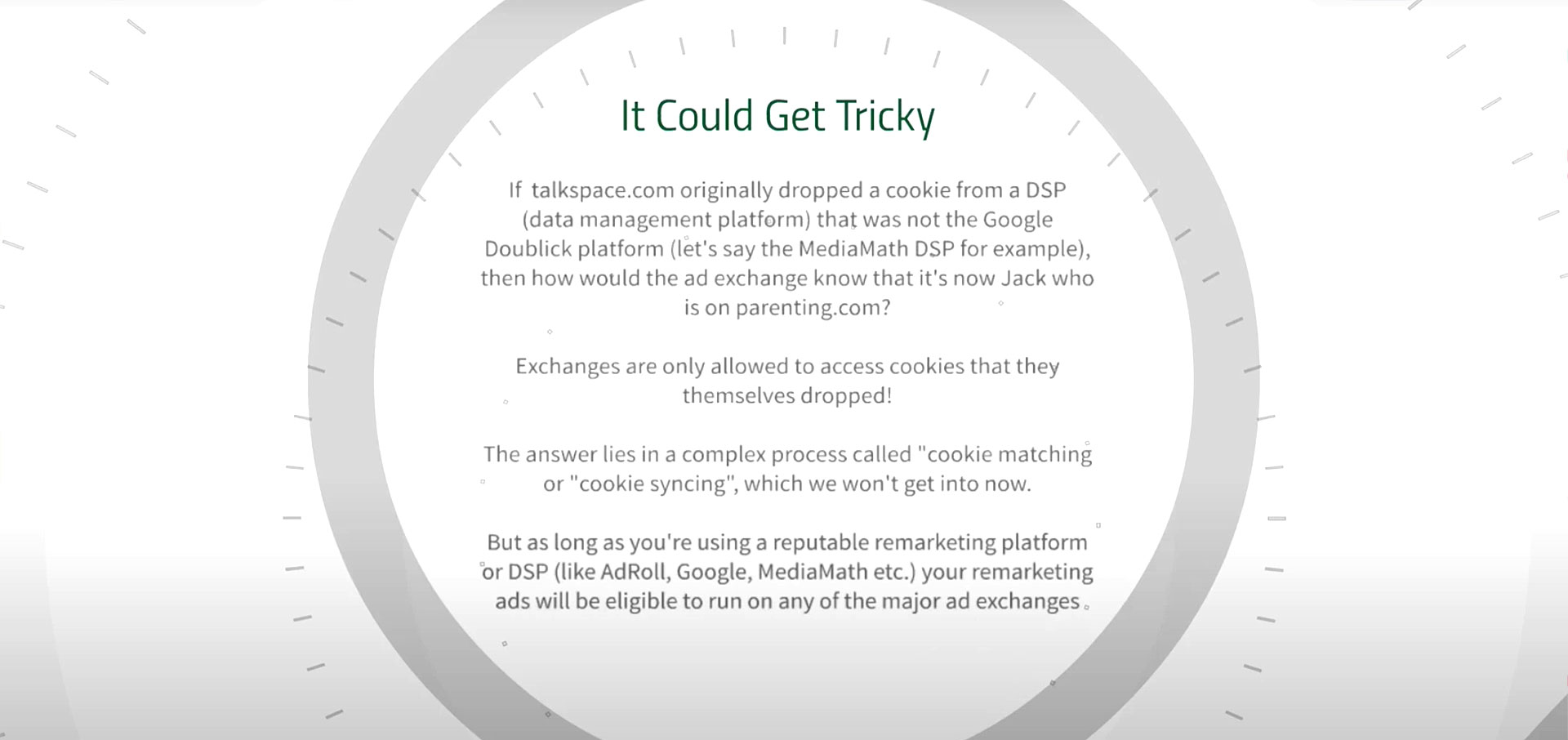
Now here's a little bit of a side point and this could get a little bit tricky. If talk space originally dropped a cookie from a DSP data management platform that was not the Google double-click platform. Let's say it was the MediaMath DSP. Then how would the ad exchange know that it's Jack who's on parenting.com? Exchanges are only allowed to access cookies that they themselves dropped because of security protocol. The answer lies in a complex process called cookie matching or cookie syncing, which we won't get into now, but rest assured, as long as you're using a reputable remarketing platform or DSP (like AdRoll, Google, MediaMath) that all have seats on the major exchanges. Your remarketing ads will be eligible to run on any of those major exchanges.
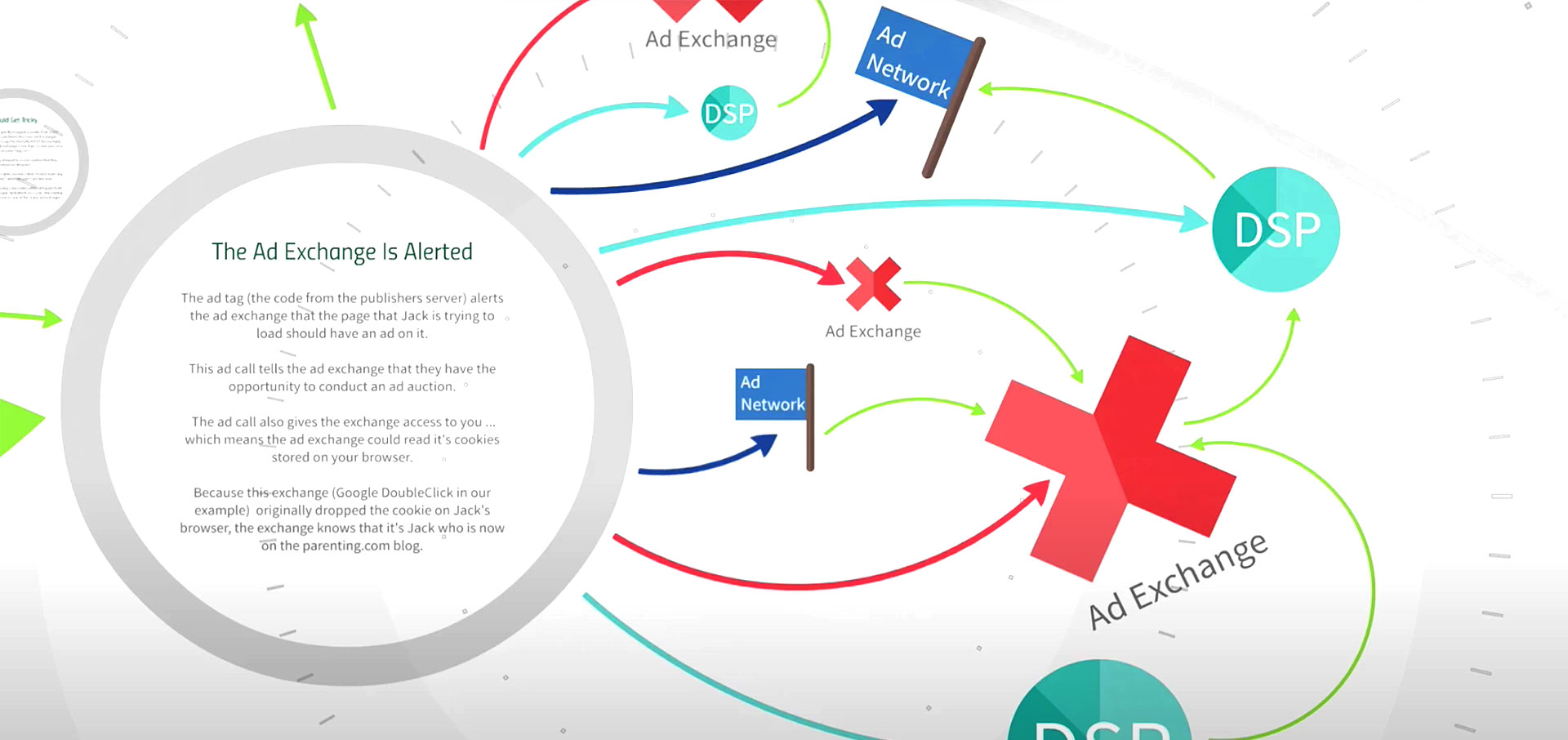
What you're seeing here is a very simplified view of the communication channels once that initial add exchange receives the add request. In truth there are many different technological platforms, many different partnerships that are going on in the backend, that ultimately play a role in serving that final ad on Jack's browser, but the main players are other ad exchanges DSPs, ad networks, third party audience networks, agency trading desks and agency's own proprietary bidding systems
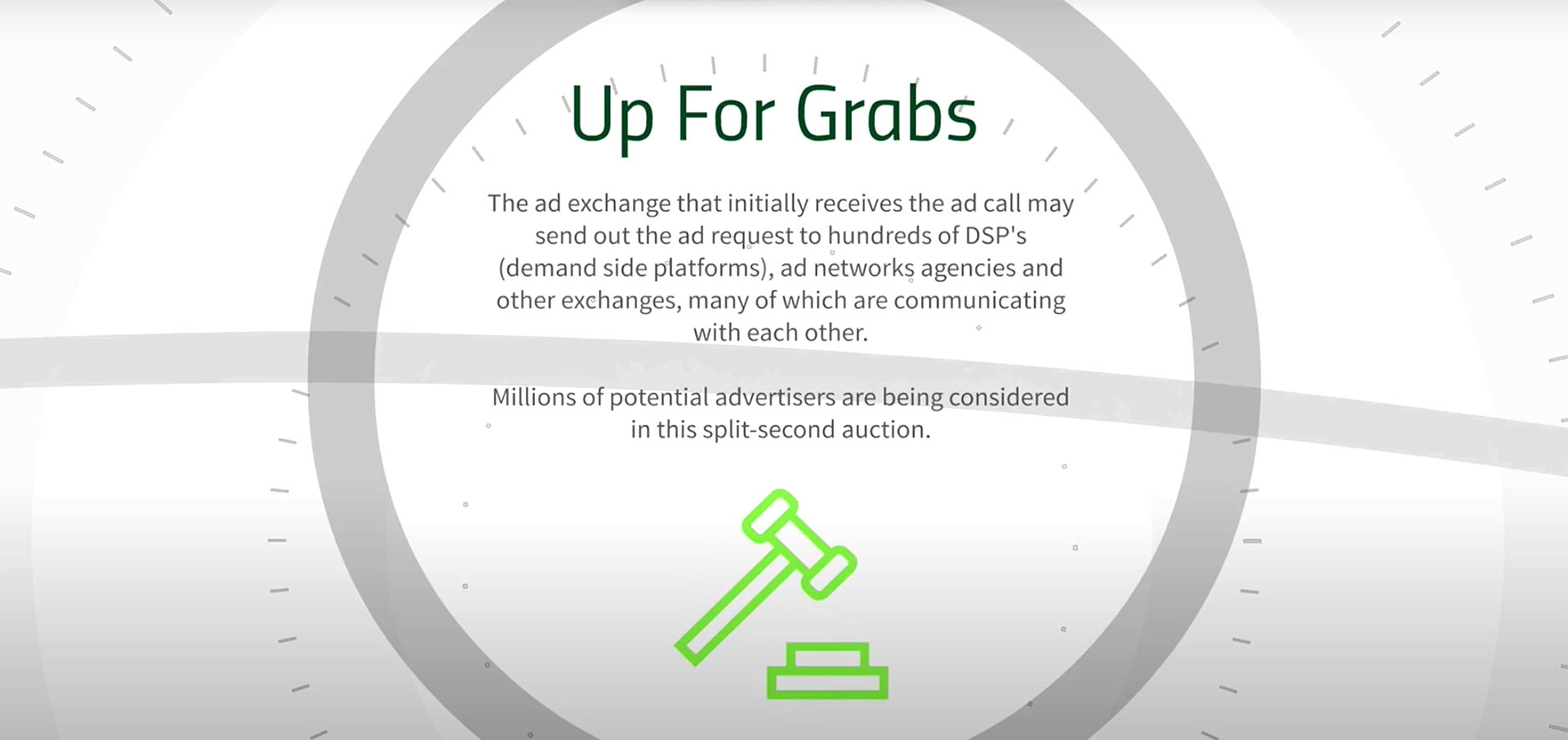
The Ad Exchange that initially receives that ad call may send out that ad request to hundreds of DSPs demand-side platforms and networks agencies and other exchanges (many of which are communicating with each other) like we just explained. Millions and tens of millions of potential advertisers are being considered in this split second auction! It's a breathtaking amount of technology.
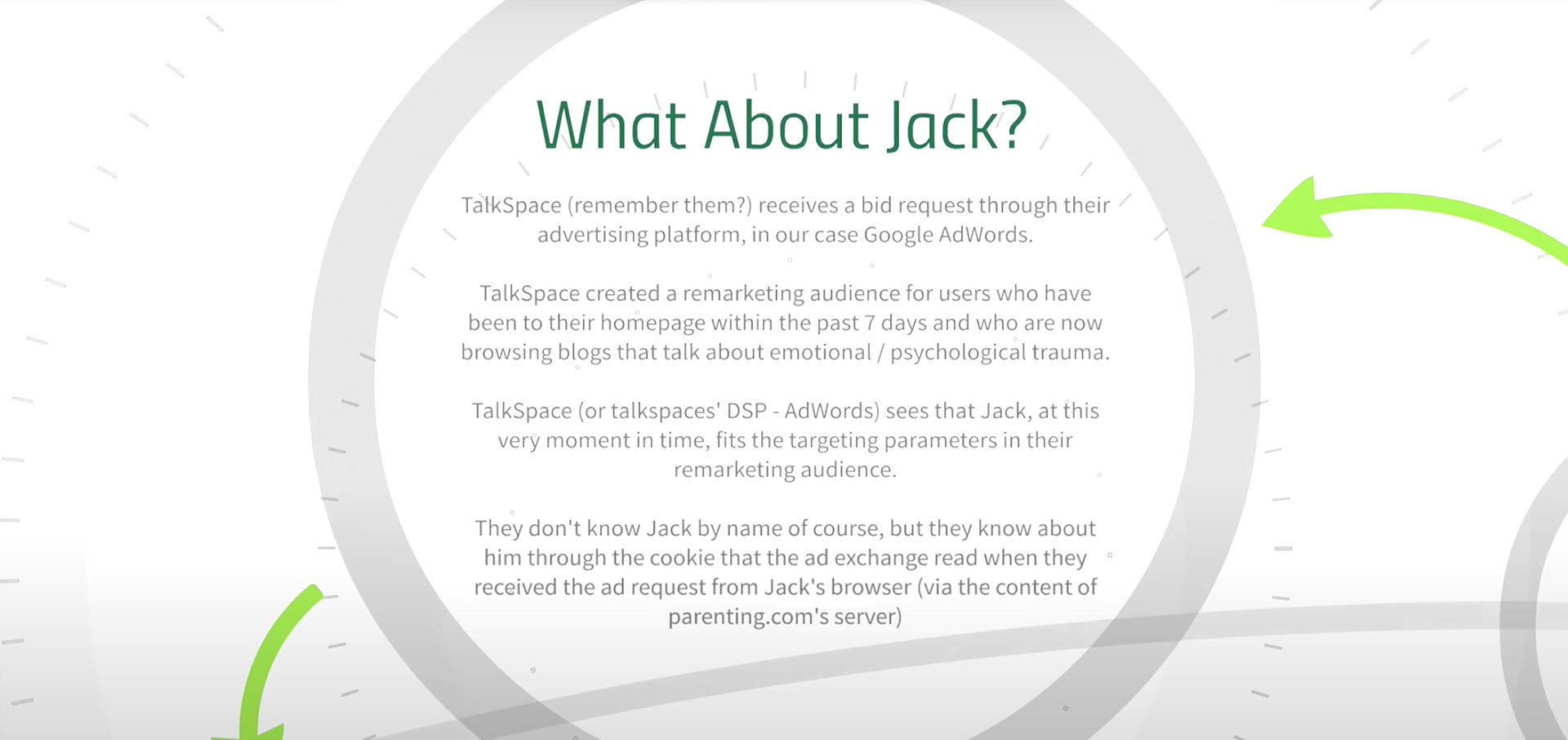
And what about Jack? TalkSpace receive a bid request through their advertising platform (which in our case is Google AdWords). TalkSpace created a remarketing audience for users who have been to their home page within the past seven days and who are now browsing blogs that talk about emotional psychological trauma. Talk space's DSP (once again, in our cases AdWords) sees that Jack at this very moment in time fits the targeting parameters in that specific remarketing audience we just described.
They don't know Jack by name of course, but they know about him through the cookie the Ad Exchange read when they received the ad request from Jack's browser via the content of parenting comms server.
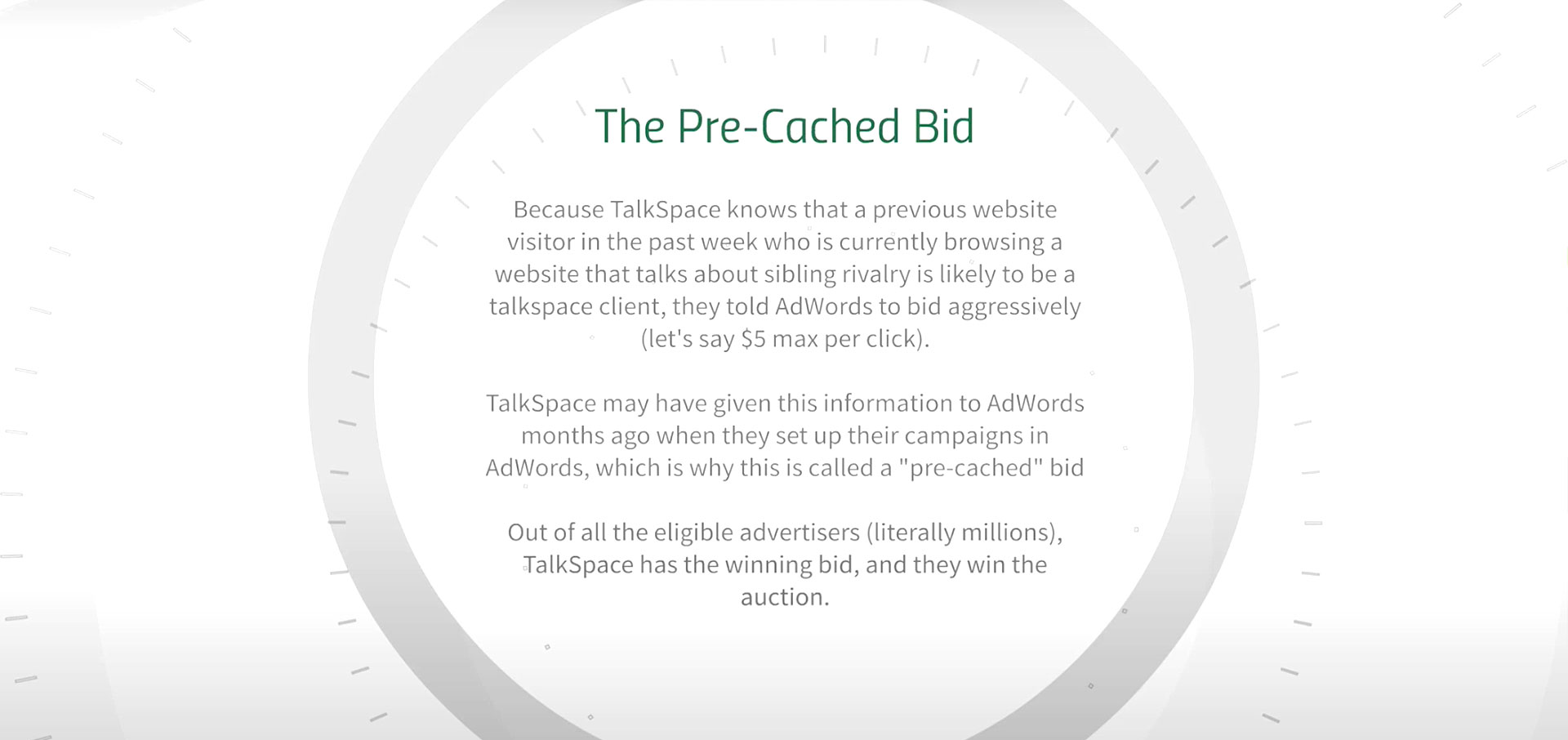
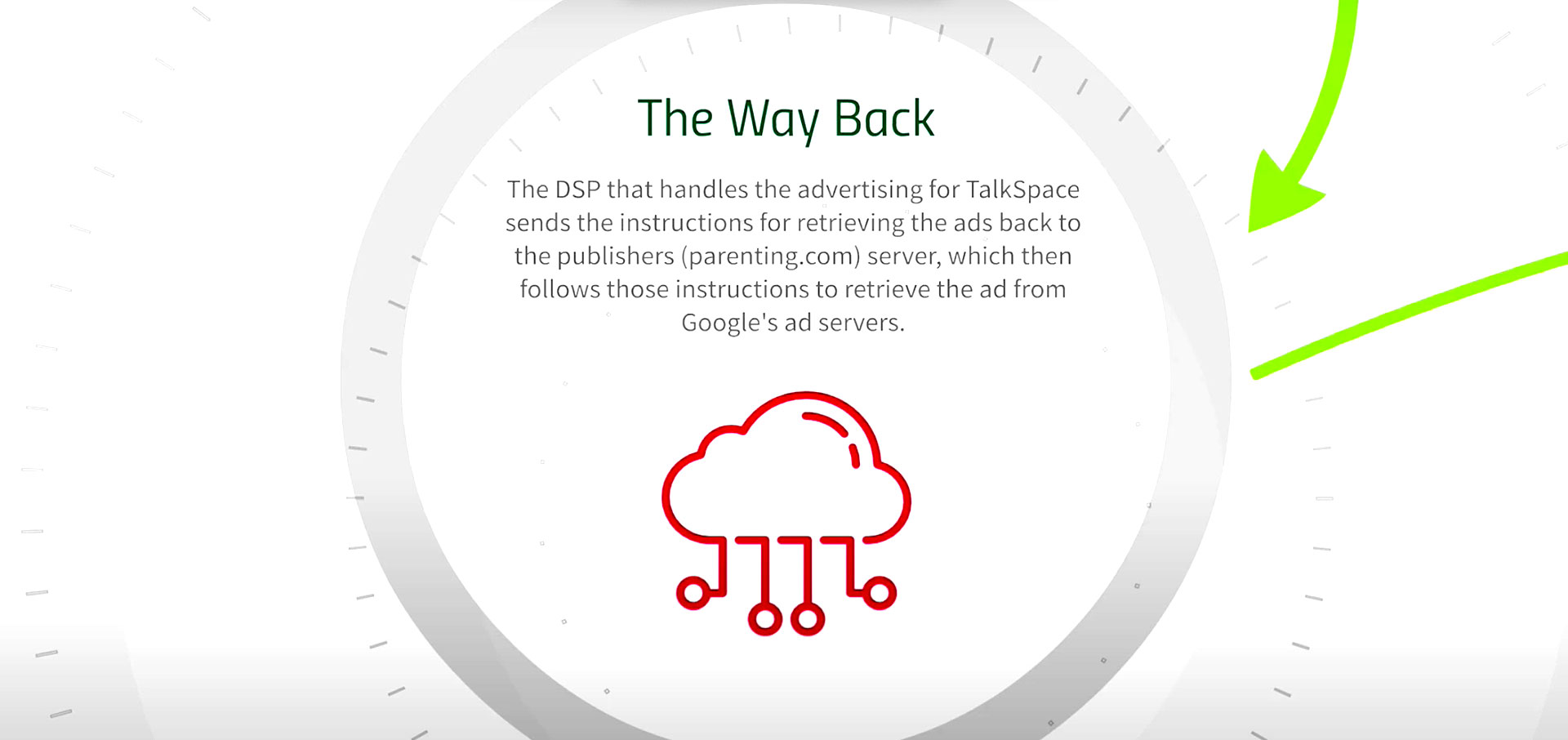
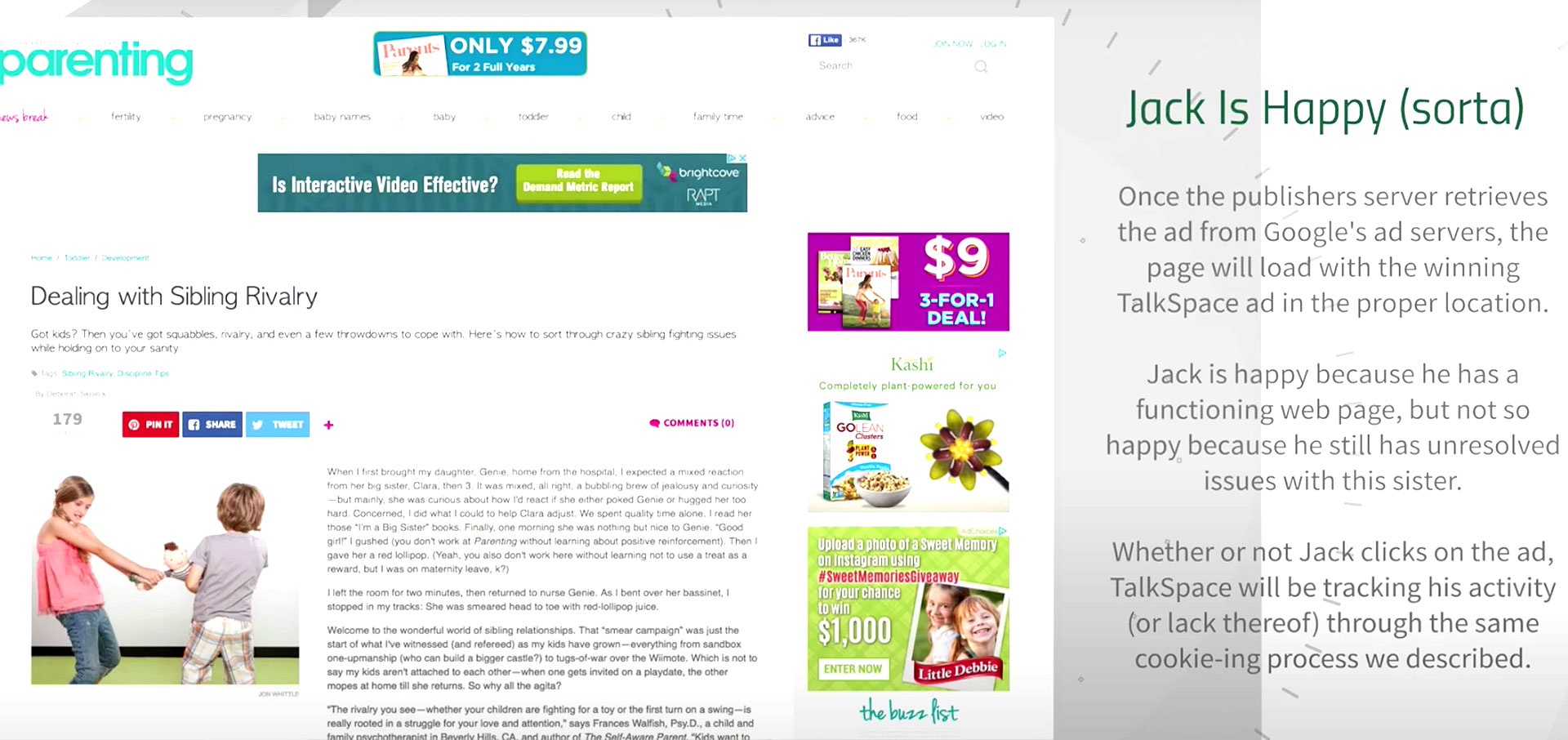
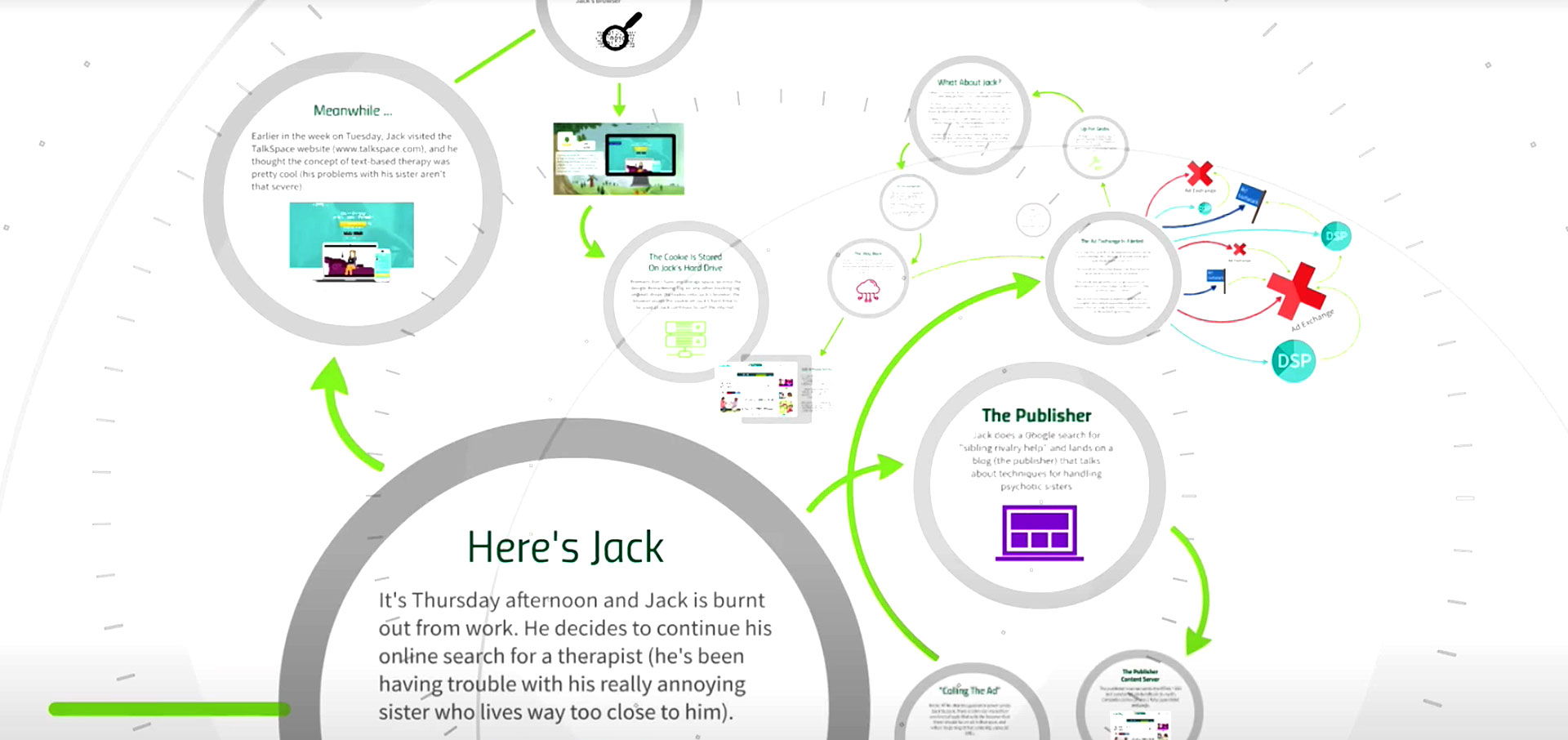
Then you'd be able to serve them every marketing ad as they continue to browse the web. I hope you're now armed with a strong fundamental knowledge of the evolution of the advertising ecosystem.
Understanding real-time bidding the basic understanding of the Ad Exchange and are able to dive in to theory technique, actual practical knowledge, to set up really profitable really powerful remarketing campaigns for your business or company you want to advertise.

